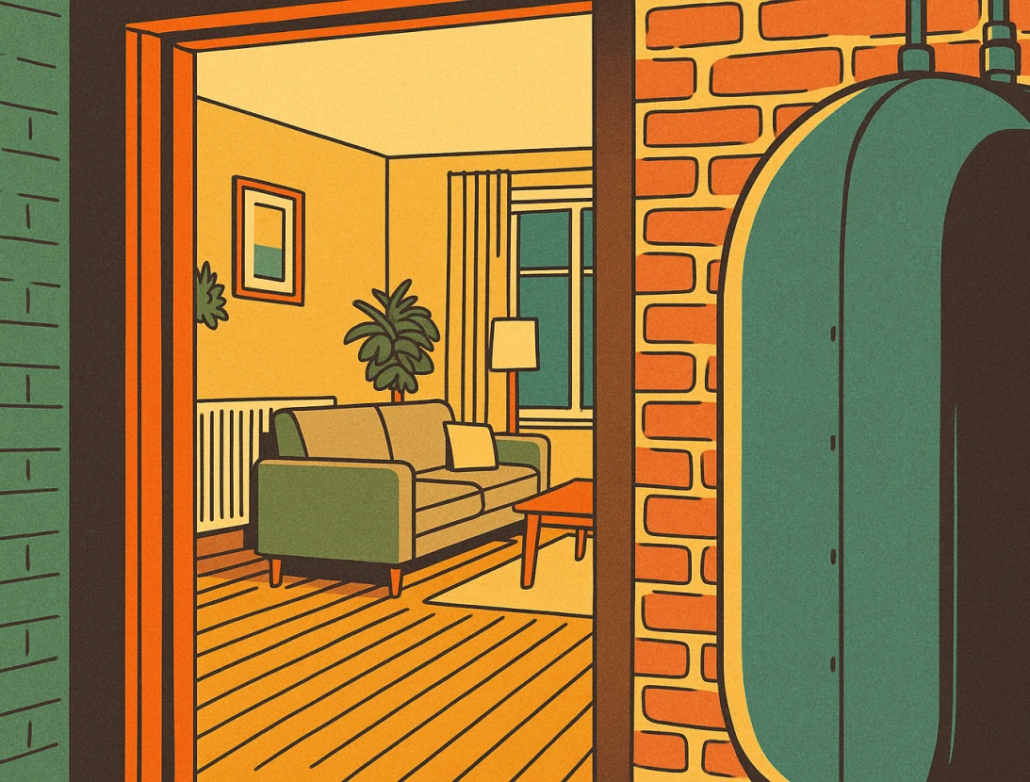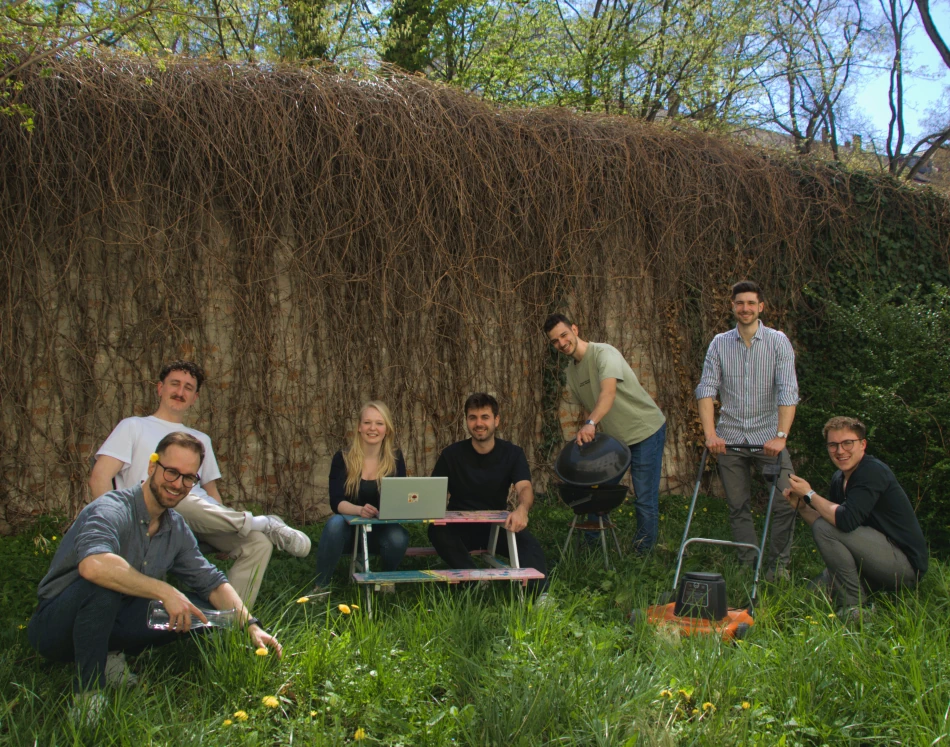In response to the pressing need for an energy transition, the European Union has introduced the European Green Deal, setting an ambitious legislative framework to achieve carbon neutrality by 2050. Among the treaty’s flagship measures is the gradual ban on oil heating, a significant step considering the widespread dependence on this fuel across Europe. Over 15 million homes across Austria, Germany, Belgium, France, Spain, or Greece remain reliant on oil heating, underscoring the urgency of these measures. France, for example, banned the installation of new oil heating systems starting in July 2022, alongside incentives encouraging transitions to renewable energy. Similar regulations have been set in Austria, aiming to phase out existing oil heating installations completely.
Sebastian Rigger, mechanical engineer and co-founder of Viennese start-up Joulzen, emphasizes: “In Austria, you’re not allowed to install any oil heating systems anymore, but you also must dispose of your old ones immediately if they are older than 25 years, or later by 2035.” Sebastian and his co-founders Florian, Christoph, and Stefan, all of whom met during their entrepreneurship course at TU Wien, recognized an untapped opportunity. Why not use old residential oil tanks for something useful and avoid generating waste? This was the inception of Joulzen‘s innovative solution—transforming these massive, obsolete containers into smart, efficient heat storages or “thermal batteries.”
Repurposing oil tanks into efficient heat storage
Central to Joulzen’s innovation is an engineered transformation kit designed for installers to quickly repurpose large, cumbersome oil tanks directly where they stand—whether in utility rooms, basements, or even buried outdoors. Sebastian Rigger vividly describes this practical approach: “We have basically two cupboards: one hydraulically controlling pumps and valves, and one electronically managing smart system operation. Everything must be intuitive and easy to handle.”
These transformed tanks operate on a simple principle: a heat exchanger converts electricity—preferably during times of low cost or surplus—into heat, which warms water stored inside the tank. Instead of using a single temperature, the water is stratified across several layers, with warmer water at the top and cooler at the bottom. This design enables users to tap into exactly the amount of energy needed for heating or hot water at any given moment. Sebastian Rigger details this feature: “If you heat up 5,000 liters to 70 degrees, you need significant energy. But by heating just the upper layers to higher temperatures and allowing cooler layers below, you efficiently store exactly the amount of energy that is available and that you’ll need in the foreseeable future.”
This layered heating strategy also helps minimize heat losses. As the stored energy is typically used within 24 to 72 hours, very little heat has time to dissipate. Material and location play a role too: most tanks are made from steel or high-density polyethylene and are fitted with thick insulation for reuse. As Sebastian Rigger explains, “In Austria, most oil tanks are placed indoors, significantly reducing the temperature difference between the container and its environment, thus minimizing heat loss over time. Even outdoor tanks, usually buried underground, benefit from earth’s insulation and additional internal insulation, keeping efficiency losses minimal.”
Smart controls: predicting and optimizing energy consumption
Efficient heat storage is complemented by Joulzen’s advanced model predictive control (MPC) unit. This sophisticated software leverages multiple parameters—energy spot market prices, solar and rainfall intensity, external temperatures, and historical household energy usage—to accurately forecast heating needs. Sebastian Rigger highlights the significance of this technology: “Our MPC anticipates the energy consumption needs 48 to 72 hours in advance, dramatically improving efficiency by 30 % to 50 % compared to state-of-the-art systems.”
The MPC’s adaptability extends beyond mere predictions, especially during periods of excess renewable energy production. “We can temporarily increase water temperatures to store surplus renewable energy when it’s abundant and cheap—or even at negative prices—and release this stored heat exactly when needed,” explains the engineer. This flexibility directly supports energy cost savings for households and grid stability.
It also opens the door to new business models. In collective housing, where shared decision-making and outdated infrastructure often delay energy renovations, Joulzen offers a compelling “heat-as-a-service” solution. “People usually tend not to agree on investments for the building,” Sebastian Rigger notes. “So we could go there and offer our system for free, and in return take a higher percentage of the savings made afterwards.” This setup enables residents to benefit from improved heating without upfront costs, while Joulzen recovers its investment through shared energy savings.
Aggregating heat for grid stability
This capacity to optimize and coordinate consumption across homes also scales beyond individual households. By aggregating numerous residential heat storage units, they create a virtual power plant capable of stabilizing energy grids. In practice, surplus renewable electricity—often turned off by grid operators during oversupply—is instead captured and stored as thermal energy. Sebastian Rigger illustrates this innovative approach clearly: “When renewable energy generation exceeds demand, threatening grid stability, our aggregated system steps in to store this excess energy as heat. Grid operators achieve stability, and households receive affordable heat. It’s a win-win.”
Importantly, Joulzen deliberately avoids reconverting stored thermal energy back into electricity, a significantly inefficient process. Instead, direct utilization of heat for heating and hot water remains the priority. “Using stored heat directly for domestic purposes makes perfect sense,” the entrepreneur concludes, “especially considering heating constitutes about 80% of household energy usage in colder climates as ours.”
Scaling thermal innovation
Currently, Joulzen is preparing for their market entry in Austria by autumn 2025, with subsequent expansions planned for Germany at least —as it is both significantly impacted by the EU’s heating transition and German-speaking. Sebastian Rigger is transparent about the timeline: “Our hardware and predictive control systems will be market-ready this autumn. However, our virtual aggregation functionality for grid stabilization will need approximately another year—expected to launch fully in 2026.”
Joulzen has already secured nearly half a million euros in funding from prominent Austrian grant programs (AWS, VBA, and FFG), a closed business angel financing round and benefits from robust incubation support at TU Wien through September 2026. The start-up cofounder reflects confidently: “We tend to be very optimistic about our achievements and workloads—I’m probably the most optimistic in our team!” Such optimism, paired with a clear roadmap, puts the Joulzen team in a strong position to turn yesterday’s cumbersome oil tanks into tomorrow’s smart, sustainable thermal batteries.







